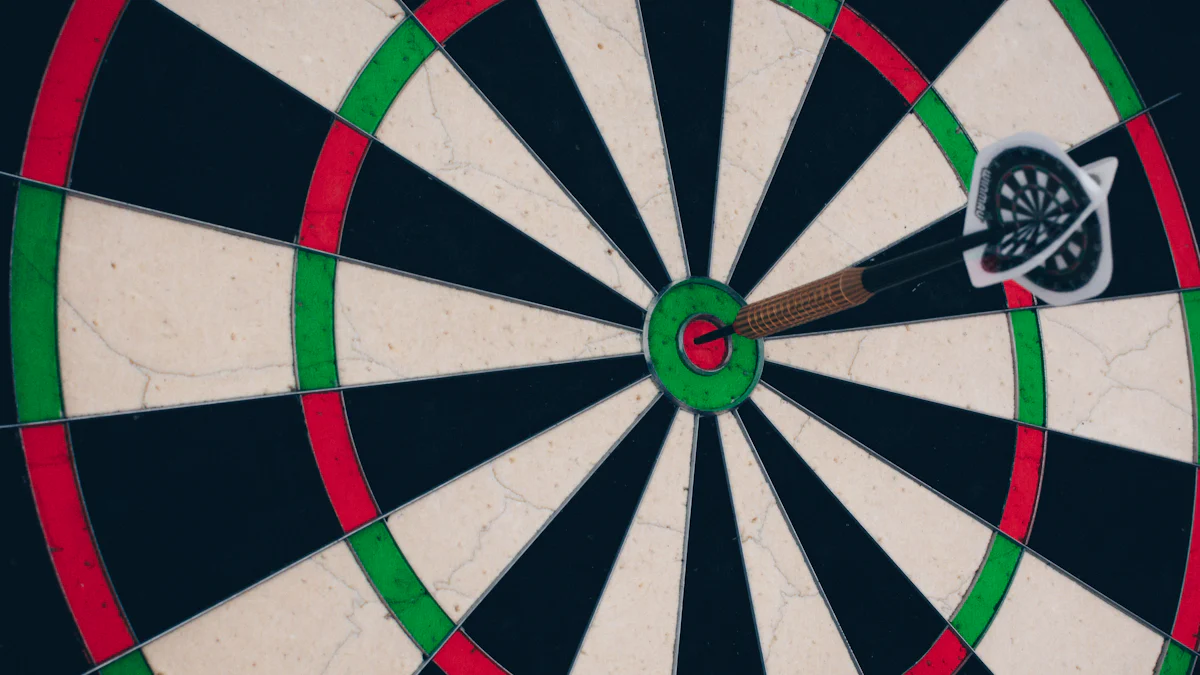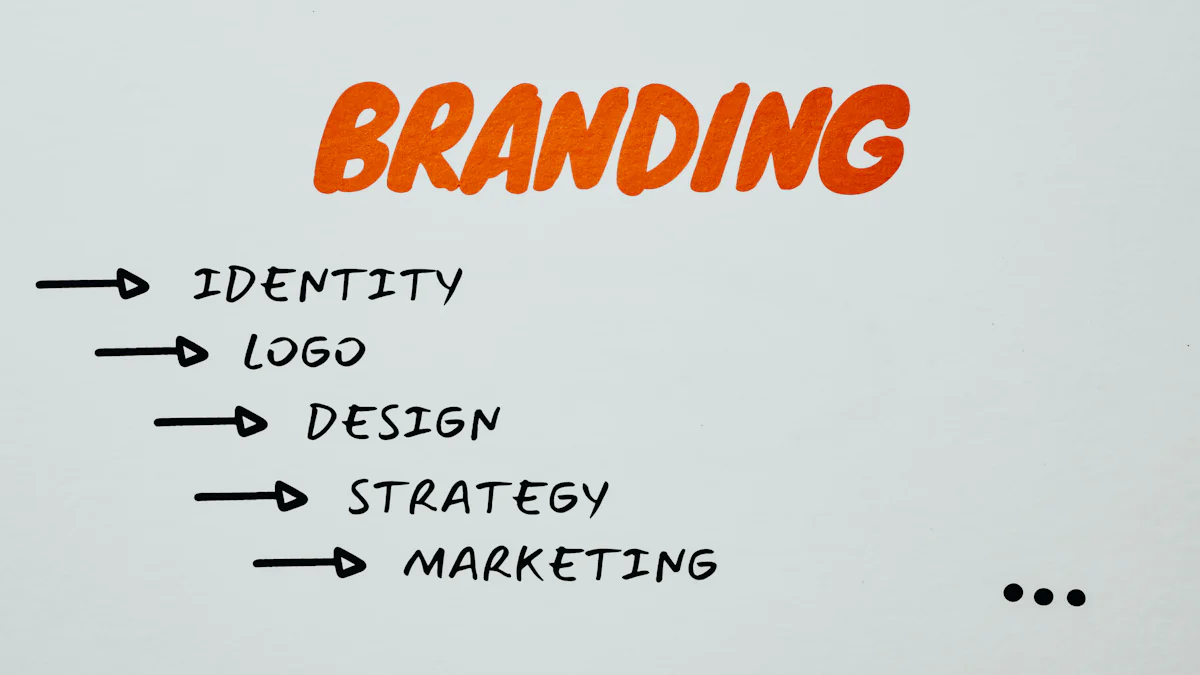Steps to Identify and Define Your Target Audience

Have you ever wondered why some businesses seem to connect with their customers effortlessly? The secret lies in understanding your target audience. When you know who you're speaking to, your message becomes clearer and more impactful. This connection helps you create marketing strategies that resonate and build trust.
Audience targeting isn’t just about selling products. It’s about solving problems for the right people. By focusing on their needs, you’ll not only improve customer satisfaction but also drive business growth. So, what is audience targeting? It’s the key to unlocking your business’s full potential.
What Is Audience Targeting?

Definition of a Target Audience
You’ve probably heard the term "target audience" before, but what does it really mean? In marketing, a target audience refers to the specific group of people most likely to buy your product or service. Think of it as the niche group you’re trying to reach with your message. These are your potential customers, the ones who will connect with your brand and find value in what you offer.
Understanding your target audience is essential. It shapes how you communicate, the tone you use, and even the platforms you choose to engage with them. When you know who you’re speaking to, your marketing becomes more effective and personal.
Difference Between Target Audience and Target Market
It’s easy to confuse a target audience with a target market, but they’re not the same. A target market is broad, encompassing all potential customers who might be interested in your product. For example, a nail salon’s target market could include all local residents.
On the other hand, a target audience is more specific. It’s a smaller group within the target market that you focus on. For instance, the nail salon might narrow its target audience to women aged 25-40 who value self-care and have a mid-range budget.
Here’s a quick breakdown:
- Target markets are large, while target audiences are niche.
- Target markets include various demographics, but target audiences focus on specific traits like age, income, or interests.
Examples of Audience Targeting in Practice
Let’s look at some real-world examples of audience targeting. Google Ads allows businesses to reach people who’ve interacted with them before. This strategy helps brands stay top-of-mind for potential customers. Similarly, Facebook offers tools to create personalized campaigns tailored to specific groups.
Companies also use audience targeting to address customer pain points. For example:
- A tech company might target Millennials aged 25-34 who love gaming and gadgets.
- A health brand could focus on parents aged 30-45 who prioritize fitness and healthy eating.
These examples show how understanding your audience can lead to better engagement and higher sales. By focusing on the right people, you can make your marketing efforts more impactful.
Why Is Identifying Your Target Audience Important?
When you know your target audience, everything about your business becomes clearer. From crafting marketing messages to deciding where to spend your budget, understanding your audience helps you make smarter choices. Let’s explore the benefits of audience targeting and what happens if you skip this crucial step.
Benefits of Audience Targeting
Improved Marketing Strategies
When you focus on a specific target audience, your marketing becomes more effective. Instead of trying to appeal to everyone, you can create messages that speak directly to the people who need your product. This approach saves time and ensures your efforts hit the mark. For example, if your target market includes young professionals, you might use social media platforms like Instagram or LinkedIn to reach them.
Enhanced Customer Engagement
People love feeling understood. When your marketing reflects their needs and interests, they’re more likely to connect with your brand. Audience targeting allows you to build trust and loyalty by showing customers you “get” them. This connection leads to better customer acquisition and long-term relationships.
Better Resource Allocation
Marketing budgets aren’t unlimited. By narrowing your focus to a specific target audience, you can spend your resources wisely. You’ll avoid wasting money on campaigns that don’t resonate. Instead, you’ll invest in strategies that deliver results. This efficiency helps you grow your business without overspending.
Risks of Not Defining Your Target Audience
Skipping the steps to identify your target audience can lead to big problems. Without a clear focus, your marketing might feel scattered. You could waste money targeting the wrong people or miss out on potential customers entirely. Worse, your message might not resonate with anyone, leaving your brand unnoticed.
Taking the time to define your audience ensures your efforts pay off. It’s a small step that makes a huge difference in customer acquisition and business success.
How to Find Your Target Audience

Finding your target audience is like solving a puzzle. You already have some pieces—your existing customers, industry trends, and competitor insights. Now, it’s time to put them together. Here’s how to find your target audience and create a clear target audience profile.
Analyze Your Current Customers
Your existing customers are a goldmine of information. They’ve already chosen your product or service, so understanding them can help you identify patterns and preferences.
Identify Common Characteristics
Start by looking for shared traits among your customers. Are they mostly from a specific age group or location? Do they share similar interests or challenges? These commonalities can help you define your ideal customer profile.
Understand Their Needs and Pain Points
To truly connect with your target audience, you need to understand their struggles. Here’s how:
- Analyze customer feedback from reviews, surveys, and sales interactions.
- Engage directly with customers through interviews or focus groups.
- Use analytics tools to spot friction points in their journey.
- Continuously monitor and adapt your strategies to meet their evolving needs.
This process will help you uncover what your customers value most and how you can address their pain points.
Conduct Market Research
Market research is essential for understanding your target market and refining your segmentation strategy.
Use Surveys and Interviews
Conduct surveys to gather direct feedback from potential customers. Ask questions about their preferences, challenges, and buying habits. Interviews can provide deeper insights into their motivations and decision-making processes.
Leverage Industry Reports and Trends
Use tools like Trend Hunter or Exploding Topics to stay ahead of industry trends. Keyword research tools like SEMrush can reveal what your audience is searching for. These insights will help you align your offerings with what’s trending in your target market.
Create Buyer Personas
Buyer personas are fictional representations of your ideal customer. They help you visualize who you’re targeting and tailor your messaging accordingly.
Define Demographics (Age, Gender, Income, etc.)
Start with the basics. What’s the age range of your target audience? Are they predominantly male or female? What’s their income level? These details form the foundation of your buyer personas.
Explore Psychographics (Interests, Values, Lifestyle)
Psychographics go beyond demographics. They reveal what drives your audience. For example, if your customers value sustainability, you could highlight eco-friendly practices in your marketing. Understanding their interests and values allows you to create a deeper connection.
By combining demographics and psychographics, you’ll build a comprehensive target audience profile. This approach ensures your marketing resonates with the right people.
Study Your Competitors
Identify Their Target Audience
Your competitors can teach you a lot about your target audience. Start by identifying who they’re targeting. Are they focusing on the same demographic as you? Or are they reaching audience segments you haven’t considered yet? Look at their messaging and content strategies. What resonates with their audience? This can give you ideas to refine your approach and stand out.
For example:
- Competitors might target specific locations or age groups you’ve overlooked.
- They may use retargeting strategies to engage previous website visitors.
By studying these tactics, you’ll uncover opportunities to differentiate your brand and connect with your audience in unique ways.
Analyze Gaps in Their Strategy
Competitors don’t always get it right. Identifying gaps in their strategy can help you find underserved segments or unmet needs in the market. Use the table below to guide your analysis:
| Strategy | Description |
|---|---|
| Identify Gaps | Spot areas where competitors fail to address customer needs or preferences. |
| Recognize Opportunities | Focus on markets they ignore, like suburban or rural areas. |
| Analyze Competitors | Conduct a SWOT analysis to evaluate their strengths and weaknesses. |
This approach helps you position your brand as the go-to solution for your target market.
Leverage Data and Analytics
Use Website Analytics to Track Visitor Behavior
Your website is a treasure trove of data. Use analytics tools to track visitor behavior and understand how people interact with your site. Here’s how:
- Identify drop-off points to improve the user journey.
- Segment your audience based on behavior and demographics.
- Optimize landing pages with A/B testing to boost engagement.
- Monitor key metrics like bounce rate, conversion rates, and session duration.
These insights will help you refine your strategies and better serve your target audience.
Analyze Social Media Insights
Social media platforms offer valuable data about your audience. By analyzing insights, you can:
- Spend your advertising budget more effectively.
- Focus on platforms where your audience is most active.
- Create messaging that resonates with your audience, building loyalty and trust.
Use these insights to fine-tune your campaigns and connect with your audience on a deeper level.
Test and Refine Your Audience Targeting
Run Targeted Campaigns
Testing is key to perfecting your audience targeting. Start by gathering data on demographics, interests, and behaviors. Then, create distinct audience profiles and run targeted campaigns. Follow these steps:
- Set clear objectives for your campaigns.
- Choose key performance indicators (KPIs) to measure success.
- Conduct A/B testing to compare different strategies.
- Allocate resources wisely to maximize impact.
This process helps you identify what works and what doesn’t, ensuring your efforts align with your goals.
Gather Feedback and Adjust
Audience feedback is invaluable. Use surveys, reviews, and social media comments to understand how your campaigns are performing. Adjust your strategies based on this feedback to improve results. Over time, this iterative process will help you build stronger connections with your audience and achieve long-term success.
Common Mistakes to Avoid in Audience Targeting
Being Too Broad or Too Narrow
Finding the right balance in audience targeting can feel tricky. If your target audience is too broad, you risk wasting time and money on people who don’t need your product. For example, marketing to "everyone who uses the internet" might sound ambitious, but it’s not practical. You’ll end up spending resources on people who aren’t interested in what you offer.
On the flip side, narrowing your focus too much can also hurt your efforts. A target audience that’s too small limits your reach and reduces the impact of your campaigns. Imagine targeting only left-handed guitar players in a single city. While specific, this approach might miss out on other potential customers who could benefit from your product.
To avoid these pitfalls, aim for a balance. Use target audience analysis to define a group that’s specific enough to connect with but broad enough to grow your business.
Ignoring Data and Relying on Assumptions
Assuming you know your audience without looking at the data is a common mistake. It’s easy to fall into the trap of thinking, “I know what my customers want.” But without data, you might overlook important groups or misunderstand their needs.
For example, ignoring data could mean missing a key audience that’s crucial to your success. Or, you might treat all audiences the same, which dilutes your focus and makes your marketing less effective. Worse, different teams in your business might create conflicting strategies because they’re not aligned on who the audience is.
Even if you identify the right audience, relying on assumptions can lead to mistakes. You might misjudge their preferences or pain points, wasting resources on campaigns that don’t resonate. Always let data guide your decisions. It’s the best way to ensure your target market segmentation is accurate and effective.
Failing to Update Your Target Audience Over Time
Your audience isn’t static. People’s needs, preferences, and behaviors change over time. If you don’t update your target audience regularly, you risk falling behind.
For instance, trends in technology or lifestyle can shift how people interact with your product. A social media platform that once appealed to teenagers might now attract professionals. If you’re still targeting the same group, you’ll miss out on new opportunities.
Regularly revisiting your target audience analysis helps you stay relevant. Use tools like surveys, analytics, and feedback to keep up with changes. By staying flexible, you’ll ensure your marketing evolves with your audience.
Defining your target audience is the foundation of successful marketing. It helps you connect with the right people and deliver messages that truly resonate. By analyzing customers, conducting research, and creating personas, you’ll uncover valuable insights. Combine qualitative and quantitative methods to refine your approach and keep your personas relevant.
Ready to get started? Engage with your audience, create tailored content, and test strategies like A/B testing or remarketing. These steps will help you build stronger connections and grow your business. Take the first step today—your target audience is waiting!
FAQ
How do I know if I’ve identified the right target audience?
You’ll know you’ve found the right group when your marketing resonates. Look for increased engagement, higher conversion rates, and positive feedback. If your audience connects with your message and takes action, you’re on the right track.
Can my target audience change over time?
Yes, it can. People’s needs and behaviors evolve. Regularly review your audience to stay relevant. Use surveys, analytics, and feedback to adjust your strategies and keep up with changes in their preferences.
What tools can help me define my target audience?
Tools like Google Analytics, Facebook Insights, and customer surveys are great starting points. They provide data on demographics, interests, and behaviors. These insights help you refine your audience profile and improve your marketing.
How specific should my target audience be?
Your audience should be specific enough to connect with but broad enough to grow your business. Avoid being too general or overly narrow. Focus on shared traits like age, interests, or values to strike the right balance.
Why is audience targeting important for small businesses?
It helps you use your resources wisely. By focusing on the right people, you’ll save money and time. Audience targeting also improves customer satisfaction, which leads to loyalty and long-term growth.
See Also
5 Ways to Celebrate Diversity in Your Ads
7 Essential Steps for Effective Influencer Marketing
Comprehensive Guide to Choosing the Right Influencer Platform
